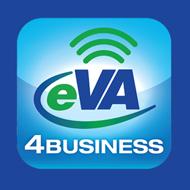Government Procurement
Revolution to Evolution: Is the B2B Marketplace Undergoing a Major Transformation? by Russell Darling
For years, eProcurement has been about supplier consolidation, to strategically limit the supplier base, to partner with content “aggregators”, to leverage those aggregators’ technology, volume pricing, and terms. However, during those same years, when I reviewed my client’s marketplace pricing (ok, maybe it was my mom reviewing the price of a MacBook Pro) I was often left scratching my head…this is a deal? Maybe, bringing the smaller, leaner, hungrier supplier into the mix will increase the competition within certain categories and yield better pricing or service? Maybe VA is on to something.
As someone who has worked in the public sector for more years than I would perhaps care to admit – with the dawn of another new year I am reminded how relentlessly quick time moves on – I took particular interest in a recent blog post by Scott Walls titled “Is eProcurement About to Evolve?” Specifically his emphasis on the benefits of improving as opposed to impeding buyer access to what he referred to as being “smaller, leaner, hungrier suppliers” (see excerpt above).
In heading up finance shared services for Bristol City Council, helping to deliver millions of pounds of savings using the cloudBuy platform, Walls’ recount of his discussion with the brain trust of the highly successful Commonwealth of Virginia eVA initiative was without a doubt most interesting.
The fact that Virginia is one of the first governments to comprehend the power of a truly open and free marketplace in which both contracted and non-contracted suppliers can come to the table, is perhaps the first sign that an evolution is indeed at hand.
Enthusiasm for this much needed change notwithstanding, Walls was quick to point out that there is a major hurdle in Virginia’s realization of its bold, new vision. The hurdle to which he made reference is the purported paucity of SaaS suppliers who are capable of facilitating an effective win-win engagement of the broader supply market. I was surprised by this simply because Virginia, unlike most public sector organizations, has what has been described as a transparent, content-focused, supplier-agnostic model. In other words eVA, and in particular it’s architects approach to supplier engagement, appears to exemplify the true spirit of the kind of open and free B2B marketplace about which Ronald Duncan wrote in his recent post “Risk awareness versus risk aversion in the emerging B2B Marketplace.”
So here is the question; are there SaaS suppliers, or for that matter a discontinuous innovator, who can step up to the plate and help to drive this evolution?
My answer can be found in my success while with Bristol City Council.
30
